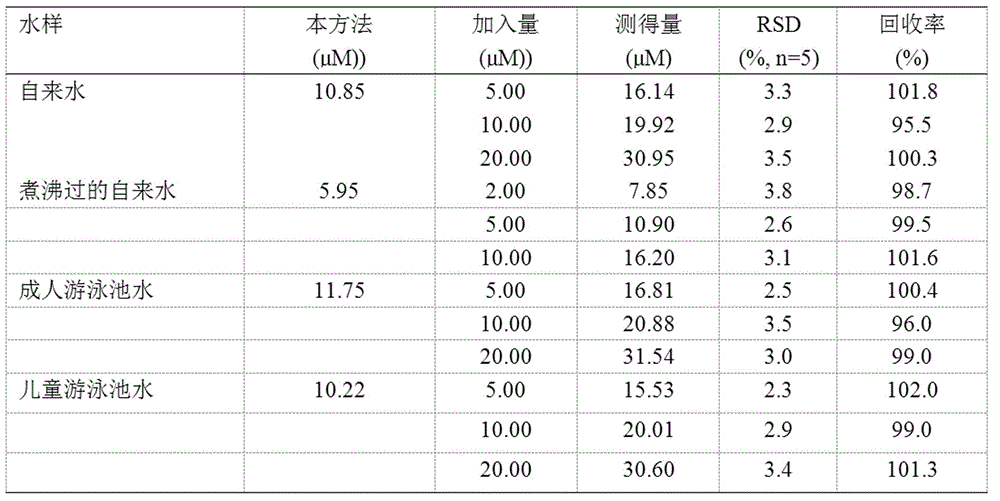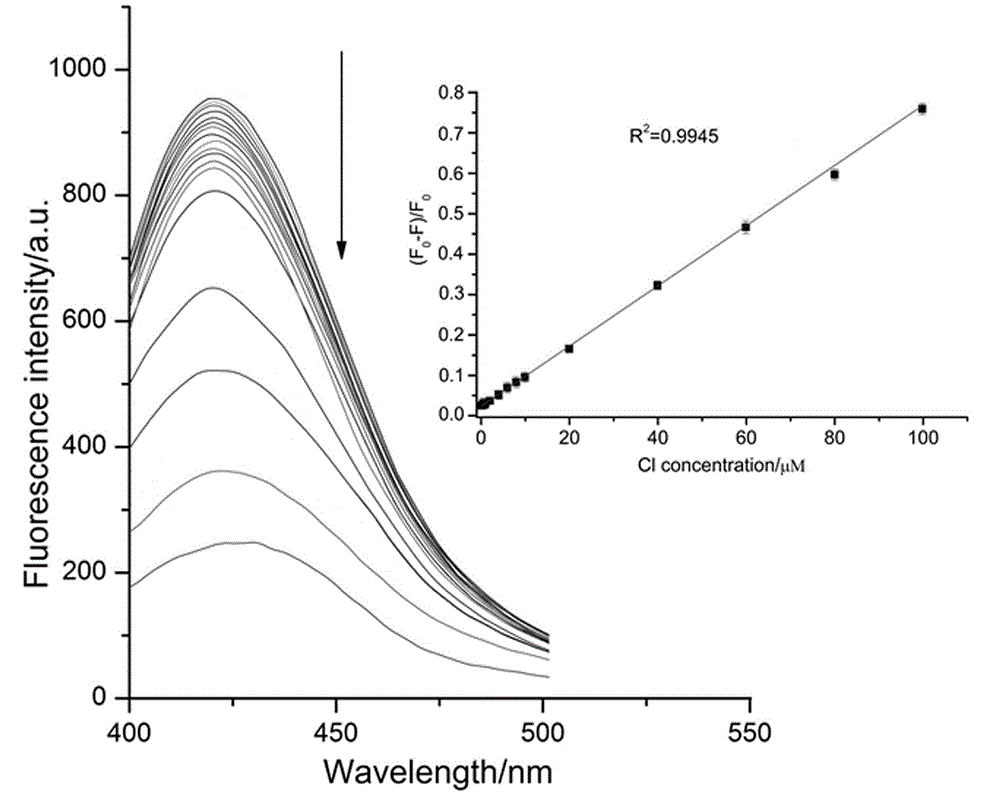Preparation and application of fluorescent carbon dot nanoprobe for detecting free chlorine in water
A nanoprobe and fluorescent carbon dot technology, applied in the field of environmental analysis, can solve the problems of poor selectivity, complex operation, low sensitivity, etc., and achieve the effects of short carbonization time, simple preparation and short response time.
- Summary
- Abstract
- Description
- Claims
- Application Information
AI Technical Summary
Problems solved by technology
Method used
Image
Examples
Embodiment 1
[0033] Preparation of N, S-CDs fluorescent probe
[0034] N, S-CDs fluorescent nanoprobes were synthesized by hydrothermal method, and the specific steps were as follows: 2.0 g citric acid (9.5 mmol) and 1 g L-cysteine (8.3 mmol) were dissolved in 5 mL water, and then Evaporated to dryness at 70°C, then transferred to a polytetrafluoroethylene-lined autoclave, heated to 200°C at a rate of 10°C per minute, and kept for 3 h, the obtained reddish-brown solution was treated with 1 mol / L NaOH The pH of the solution was adjusted to 7.0, and then centrifuged at a speed of 12000 rpm to obtain an aqueous N, S-CDs solution, which was dialyzed (MWCO: 1 KDa, pore size: 1.0 nm) to separate unreacted substances and stored at 4 °C in the dark.
Embodiment 2
[0036] Application of N,S-CDs Fluorescent Probes to Detect Free Chlorine in Water
[0037] In the phosphate buffer solution with pH=5, when the concentration of N, S-CDs is 1 μg / mL, the response speed of free chlorine to N, S-CDs is fast. Under the excitation of 345 nm wavelength, N, S-CDs The fluorescence was quickly quenched by about 60%, and in 10 min, the fluorescence was quenched by about 80%, and in the next 1 hour, the fluorescence intensity remained basically unchanged.
PUM
| Property | Measurement | Unit |
|---|---|---|
| Pore size | aaaaa | aaaaa |
Abstract
Description
Claims
Application Information
 Login to View More
Login to View More - R&D
- Intellectual Property
- Life Sciences
- Materials
- Tech Scout
- Unparalleled Data Quality
- Higher Quality Content
- 60% Fewer Hallucinations
Browse by: Latest US Patents, China's latest patents, Technical Efficacy Thesaurus, Application Domain, Technology Topic, Popular Technical Reports.
© 2025 PatSnap. All rights reserved.Legal|Privacy policy|Modern Slavery Act Transparency Statement|Sitemap|About US| Contact US: help@patsnap.com



